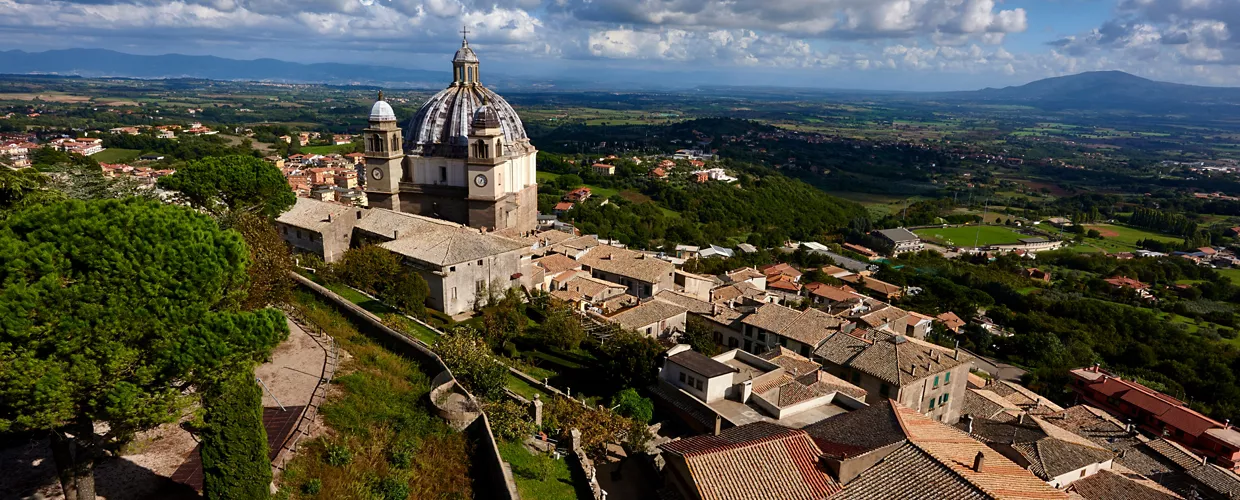This content was automatically translated. View the original text.


Overview
Montefiascone hill overlooks Lake Bolsena, next to the ancient routes of the Via Cassia traced by the Roman consuls and the Via Francigena travelled by mediaeval pilgrims on their way to Rome. The place had acquired considerable importance as the residence of the papal rectors of Tuscia, who for centuries stayed here among the gardens and views of the Rocca dei Papi. Whether intentionally or not, the name of the town refers to the wines of the area. Of course, in the 12th century, the German prelate Johannes Defuk testified to the presence of good wine in the places where he travelled with the comment "Est!" ("C’è!" in Latin), noted here "Est! Est! Est!" with clear enthusiasm.
Cardinal Defuk's tombstone is walled near the entrance of the church of San Flaviano, at the beginning of the Francigena route for Orvieto. But the building itself is also worth a stop for its unique architecture, consisting of two rooms one above the other: the façade has a 16th-century loggia climbing up Romanesque-Gothic arches, while the two churches are facing in opposite directions, and neither of the two lacks any frescoes. Higher up, Montefiascone's profile is marked by the 17th-century dome of the Cathedral, which now has a mid-19th-century neoclassical portal but an early 16th-century overall layout. However, all of the historic centre is worth a visit.
If you stop in the area, it would be good to go to the two Bagnoregio along the provincial roads towards Orvieto on their tufa spurs: "Balneum Regis" was mentioned in documents as early as the sixth century, and it shows. The original centre of the settlement,Civita, is separated and only accessible today by a panoramic concrete bridge. The sight is quite out of the ordinary, and is further uplifted in the suspended village by cafés and craft shops that thrive on the inevitable influx of tourists. Mediaeval alleyways and houses take centre stage, amid churches, palaces and a geological museum explaining the reasons for the continuing erosion in the Valle dei Calanchi.
01027 Montefiascone VT, Italia